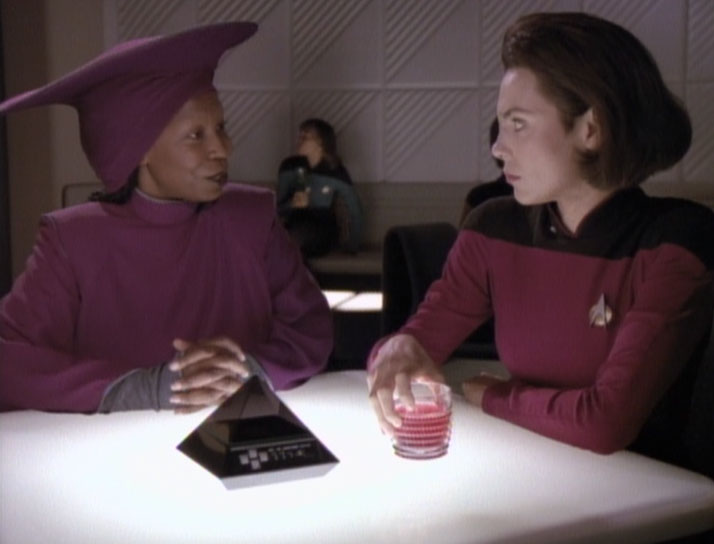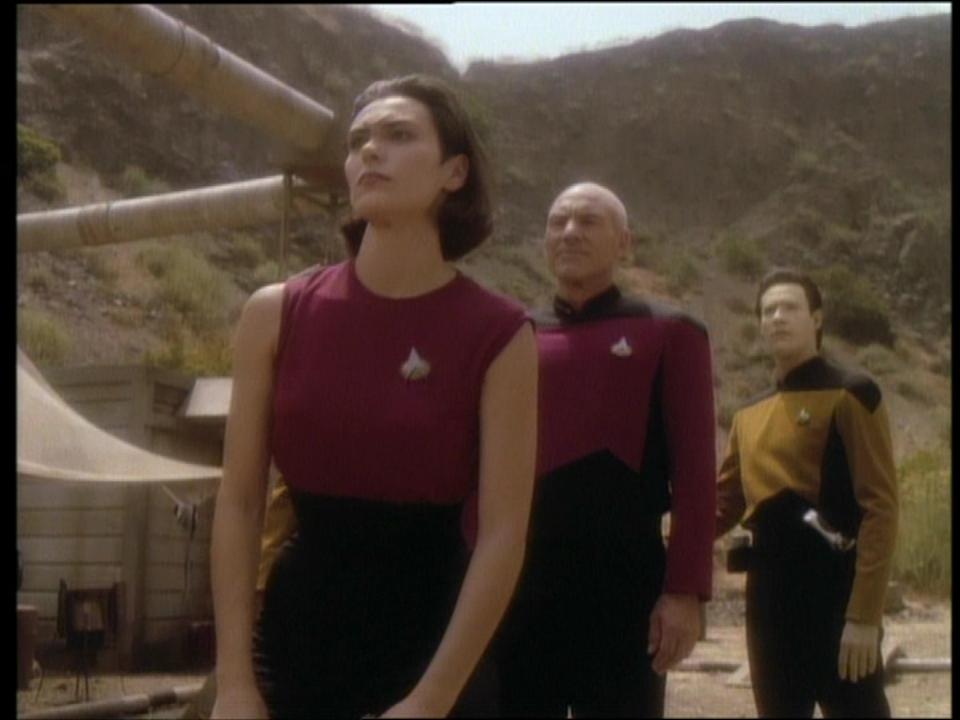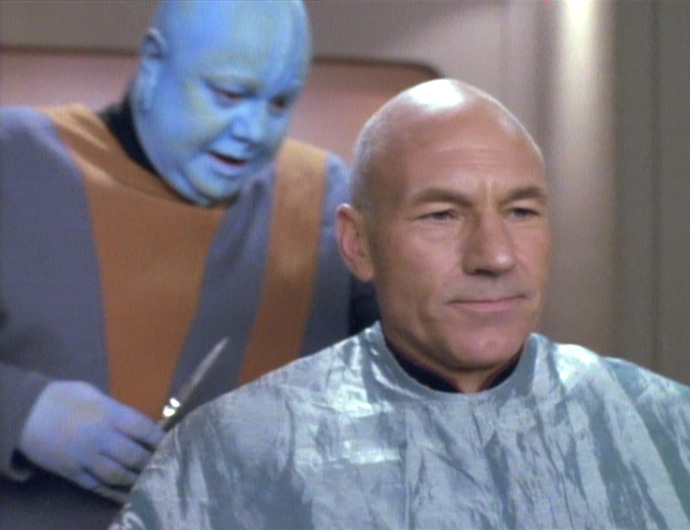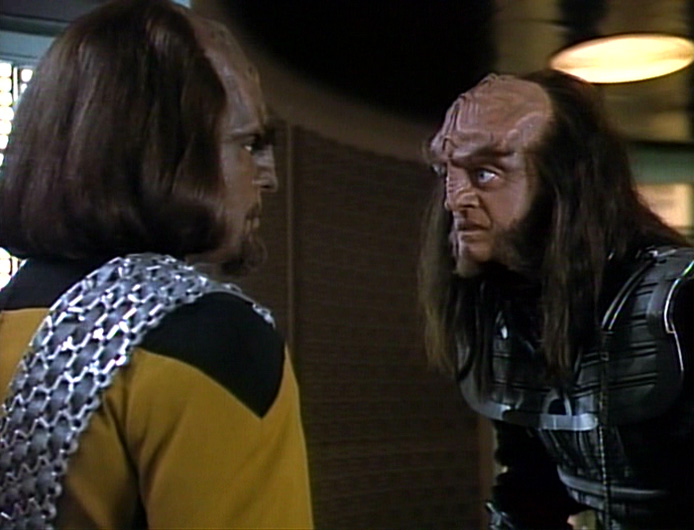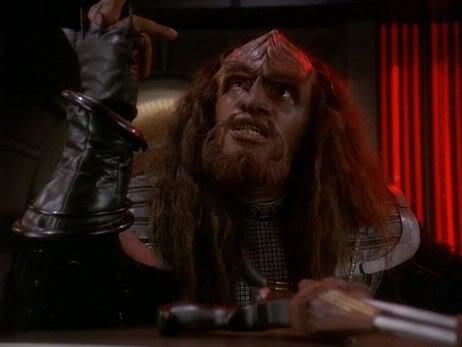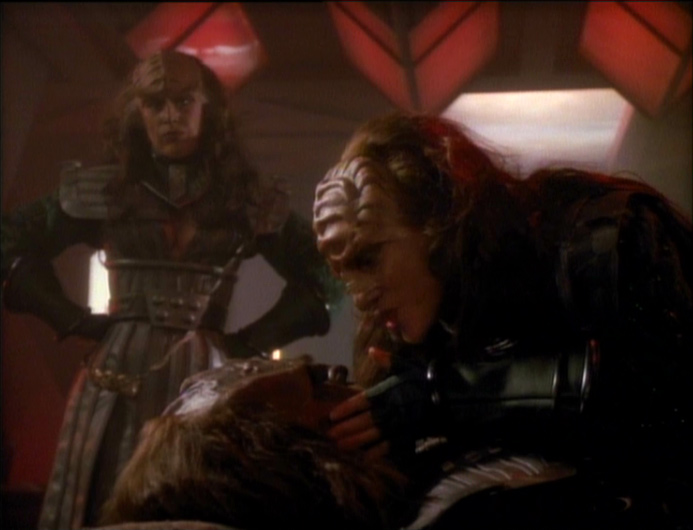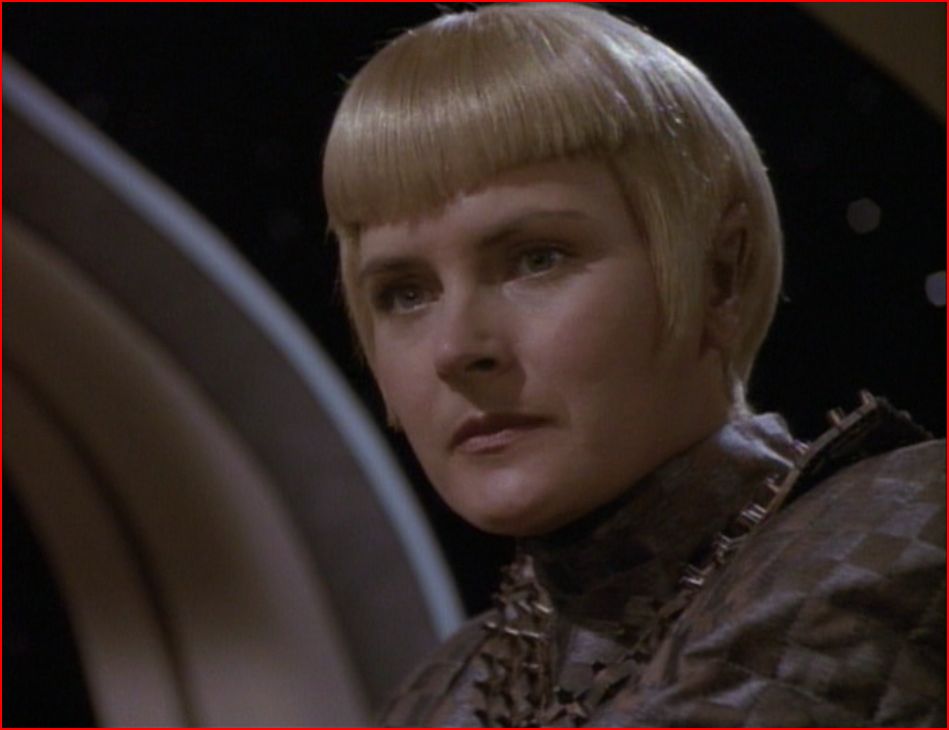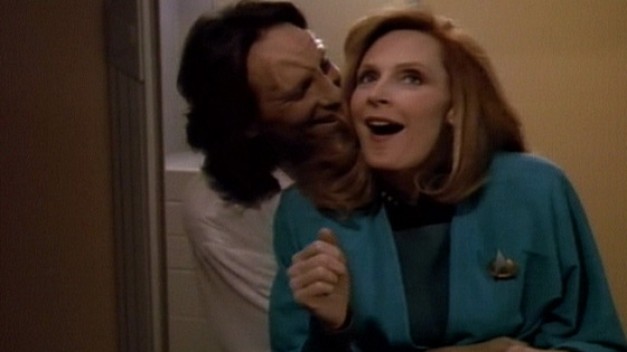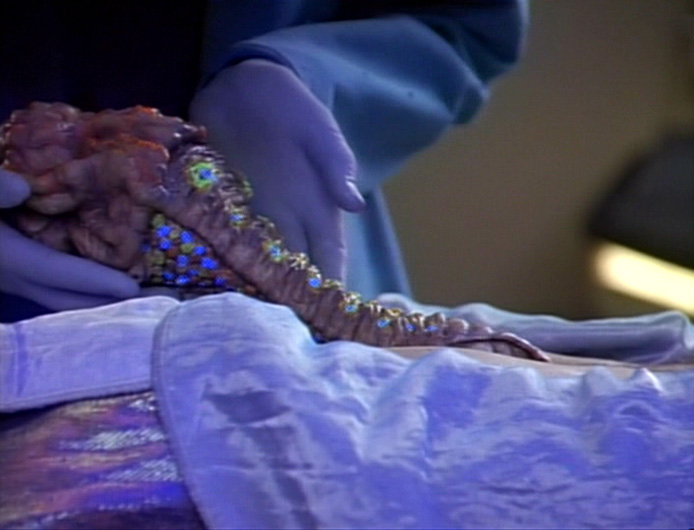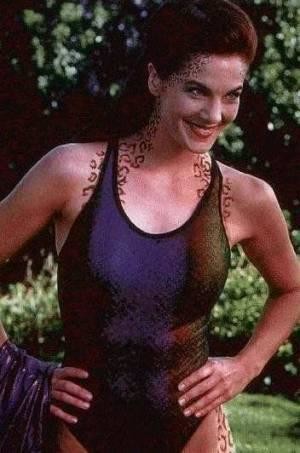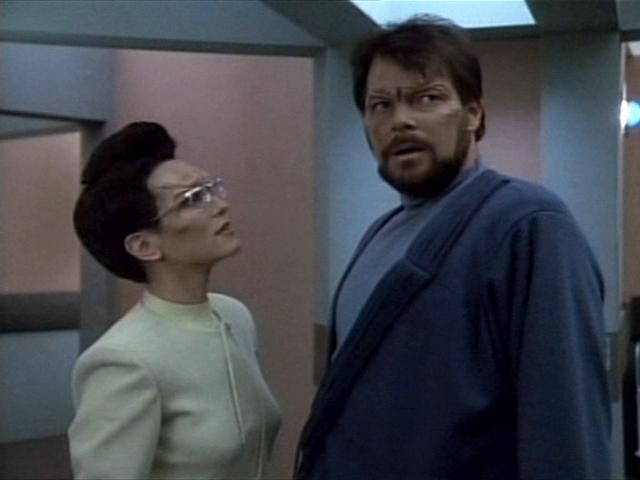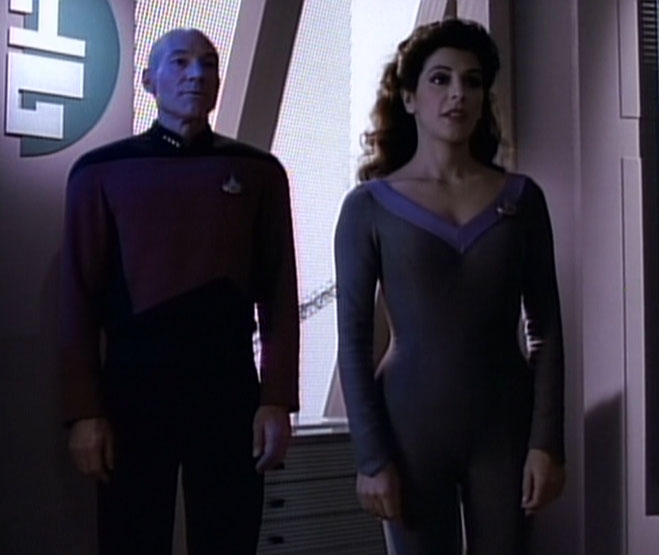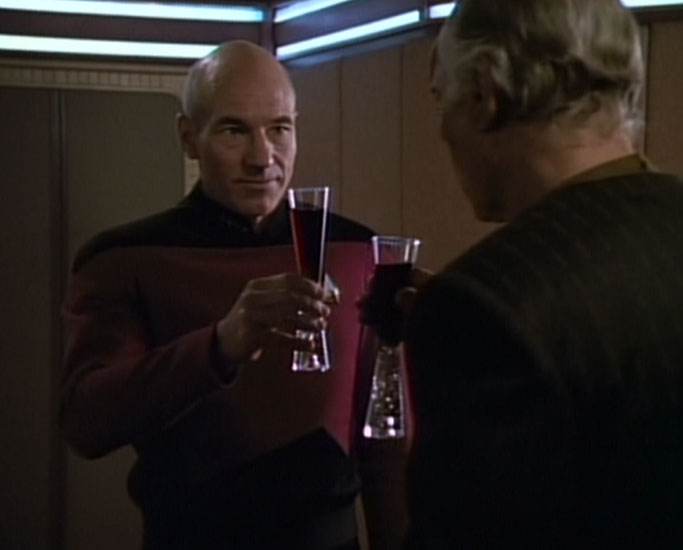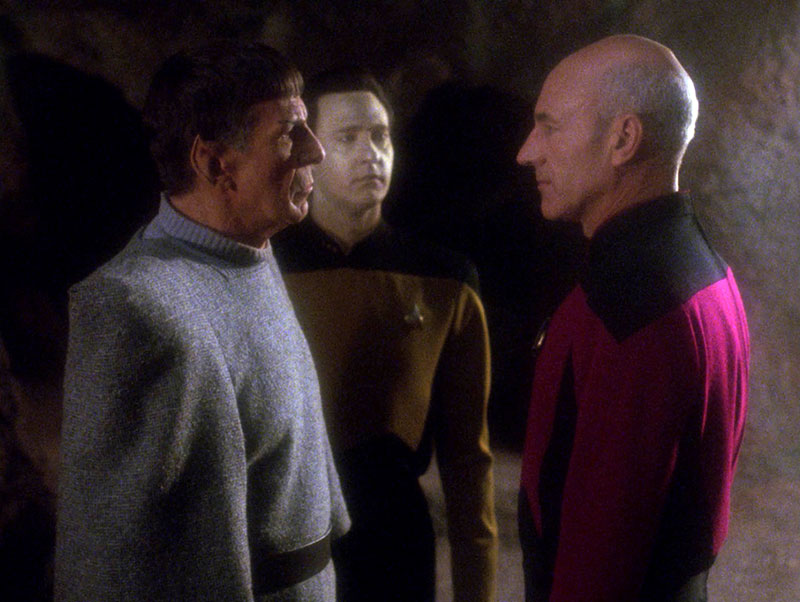
Part I: Starfleet learns Spock is chillin’ on Romulus, and no one knows why. Hoping for some answers, Picard visits Spock’s dad, Sarek (Mark Lenard) who’s dying and whom Picard mind-melded with a year earlier to help Sarek fulfill his last mission as an ambassador (in “Sarek”). Sarek points Picard in the direction of Pardek (Malachi Throne) a Romulan senator Spock has known for years, and Picard and Data, masquerading as Romulans, head to Romulus on a cloaked Klingon ship. Meanwhile, Riker leads an investigation about some parts of a stolen Vulcan ship or something. Shortly after arriving on Romulus, Picard and Data meet Spock — and Trekkers’ pants everywhere got a little tighter.
Part II: Spock tells Picard he is on Romulus to try to reunify the Vulcan and Romulan peoples, as they share common ancestry (see “Balance of Terror”). Picard is skeptical, but Pardek is apparently making some inroads for Spock with Neral (Norman Large) the new Romulan procounsel. We then learn that Neral is working with Sela (Denise Crosby, reprising her role from “Redemption”) on some sort of nefarious plan (thunderclap). Their idea is to send an alleged peace delegation to Vulcan that really is an invasion force. Picard, Data and Spock foil the plan and a warbird destroys three stolen Vulcan ships — one of which was the one Riker was trying to find — carrying the invasion force in front of the Enterprise. Despite the setback, Spock stays on Romulus to continue the reunification efforts — but not before mind-melding with Picard to share Picard’s connection with Sarek.
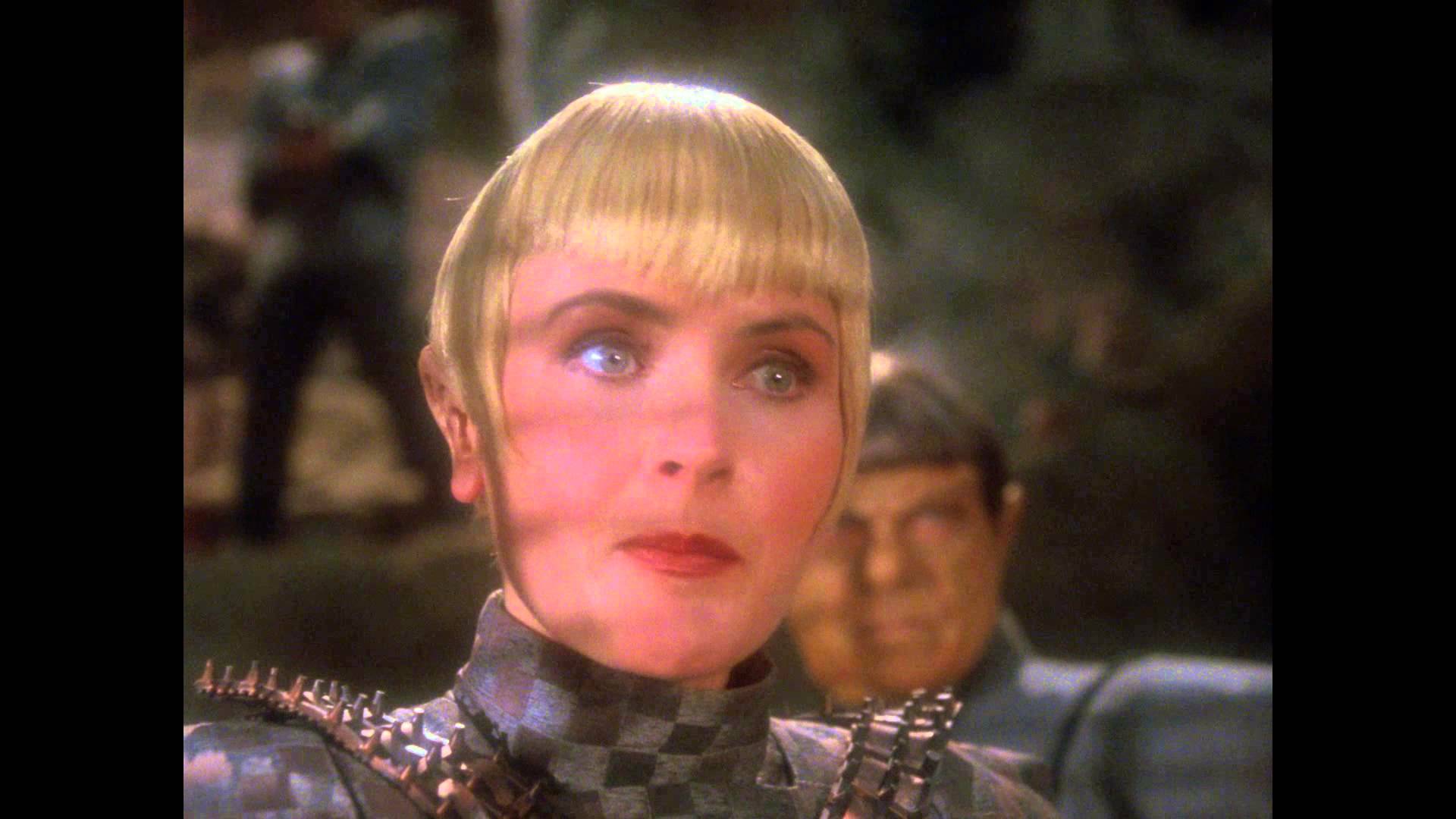
Why it’s important
Interestingly, the effects of this episode don’t really show up again aside from one other episode (“Face of the Enemy”) until the rebooted “Star Trek” in 2009. Spock’s actions to bring peace to Romulus led to the planet’s destruction, which causes renegade Romulan Nero to alter history in that film. But you could argue that Spock’s actions here pretty much negate everything we saw on TOS, the movies, TNG, DS9 and Voyager (and this site). Only Enterprise and the two JJ movies would not be erased.
This episode is important as it (sort of) explains the Vulcan/Romulan backstory. Some of it really doesn’t make sense, as we’ll discuss. But some of it does — and we at least understand more of the differences between the two races. We also see more of the Federation-Klingon-Romulan triangle here. Interestingly, Spock references his role in the peace treaty with the Klingons — something that Trek viewers didn’t know about yet. These two episodes premiered in early November 1991, while “Star Trek VI: The Undiscovered Country” — which details the peace process — premiered in early December of that year. That didn’t tip things about the Federation being at peace with the Klingons — we’d known that since at least season one of TNG — but it was a small reveal about what the final TOS movie would cover.
Probably most importantly, though, is the fact that this episode is really the first big-time crossover between different Trek franchises — and it spurred many, many others.
Between fall 1987 and fall 1991, the only real crossover between TOS and TNG was DeForest Kelley’s appearance in “Encounter at Farpoint”. No other episode, or “Star Trek V: The Final Frontier”, which came out in 1989, was a crossover — and only a few episodes featured any connections between the two series, other than the basic premise that underlies Star Trek. Maybe, after “The Naked Now” was such a dud, the creators were gunshy?
But that all changed after this episode (and, to a point, in “Sarek”). Michael Dorn shows up in “Star Trek VI”, playing his grandfather (and Kirk and McCoy’s lawyer during their trial). The first episode of DS9, which aired about 14 months after “Unification”, involves a handoff from TNG, and the first episode of Voyager in early 1995 involved a handoff from DS9. DS9 had episodes about the mirror universe, first seen in “Mirror, Mirror” and even visited the original Enterprise in “Trials and Tribble-ations”. Voyager featured a flashback episode to the events of “Star Trek VI: The Undiscovered Country” and on and on.
In other words, this episode was most important as a creative launching point than within the Star Trek universe — which is amazing considering what it actually covered in the Star Trek universe.
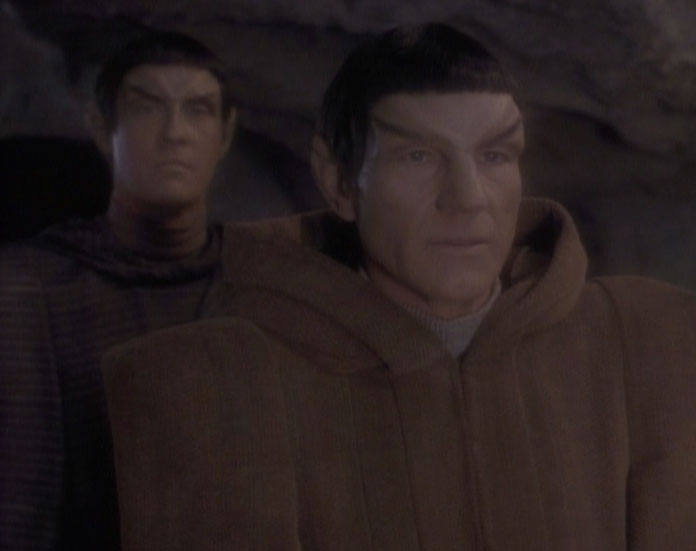
What doesn’t hold up
Part I is mostly fine. It’s hard to believe that if it’s so easy to get into Romulan space, that the Klingons wouldn’t just send a cloaked armada in and start destroying everything. There are later mentions of how groups of cloaked ships can be somewhat detectable — and how there are listening posts that might detect cloaked vessels or something — but I think the whole thing is just sloppy writing. And I’ll avoid the whole Universal Translator discussion.
Part II is really the problem.
The subplot with the Enterprise was honestly pointless. The business with Riker and Worf at the bar and dealing with the Zakdorn bureaucrat, etc., was needless filler. The Enterprise’s awareness of the stolen Vulcan ship really didn’t advance the story. But whatever — maybe they needed padding because Nimoy didn’t have time to be in more scenes.
The stuff on Romulus while more significant, was pretty implausible. Here’s a quick list of the problems:
1) Why did Picard and Data remove their Romulan disguises when they knew they’d likely return to the surface? Still looking like Romulans could have really been helpful.
2) How did Spock, after his first meeting with Neral, just walk out of the procounsel’s office without an escort? It seems like he’s just planning to stroll through the government offices — despite the fact that he’s on enemy soil! Spock wouldn’t have had ill intentions, but some out-of-the-loop guards have thought he might.
3) Why did Sela (in typical, bad-villain style) explain the entire plot to Picard, Data and Spock — and why didn’t she kill them (or incapacitate them) when Spock refused to cooperate? Why did Sela even leave an accessible computer in the procounsel’s office?
4) Why did the Romulans send the stolen Vulcan ships through the Neutral Zone at Warp 1? They might have made it to Vulcan in about five years at that speed — unless the Neutral Zone is really, really small, which would seem to defeat its purpose.
5) Why did the Romulans think that a few thousand Romulan troops would have conquered a planet with (presumably) billions of inhabitants? Couldn’t a ship in orbit have keyed in on all Romulan life signs and beamed them into holding cells?
6) Why did the Romulans steal the Vulcan ships at all? It’s not as if doing so disguised the fact that the ships were coming from Romulus. As far as I can tell, the Vulcan ships are part of the story just to give the Enterprise something to do while Picard and Data go to Romulus.
7) For a society as paranoid as the Romulans, how did Picard and Data avoid being scanned and detected while on the planet? And how did Spock walk around for weeks (maybe longer) without the normal Romulan forehead ridges? How did the Klingon ship use its transporters while cloaked when the Defiant (later, on DS9) never could?
Probably my biggest gripe, though, is the idea that Spock would have enough interest in and knowledge about unifying the Vulcans and Romulans considering that the Federation isn’t supposed to know much at all about the Romulans. How would he have the basic understanding to determine whether reunification was possible — or even worthwhile? Even if you throw out “The Neutral Zone” and all its talk about the Romulans being absent for decades — which the creators basically threw out after that episode — the idea that Spock could have much of a relationship with the Romulans (through Pardek) is laughable. We’re talking about an empire blocked for more than two centuries from the Federation by a large area of neutral space. And by all indications, the Romulans left Vulcan hundreds of years earlier. So, it’s unlikely that Spock would have records of anything to form the basis of reunification or a desire to reunify. Did he just figure it was a good idea? Doesn’t seem very logical.
Final thoughts
If it sounds like I’m being harsh about a couple episodes that are sort of cornerstones of TNG and some of Trek’s most celebrated moments, it’s because I think they’re so deeply flawed (especially part II) and, most importantly, that they didn’t need to be. A few lines of dialog about Spock’s thinking (which could have easily taken the place of the filler with the Enterprise’s investigation) and better writing regarding the Romulans’ plan (maybe Sela wouldn’t have known about the Klingon ship, and Picard, Data and Spock could have beamed there and tapped into the recorded Spock message?) and this episode would have been great BEYOND the nice crossover moments.
As it is, this episode only really gets by on those moments.
Coming later this week …
Those Swedish guys return.

